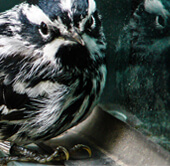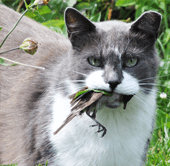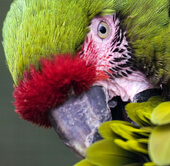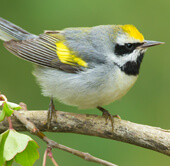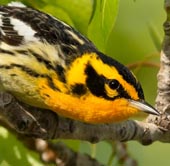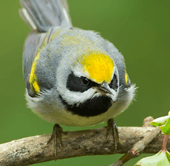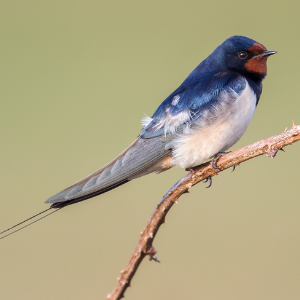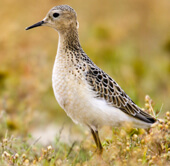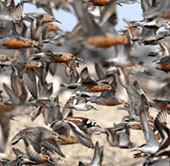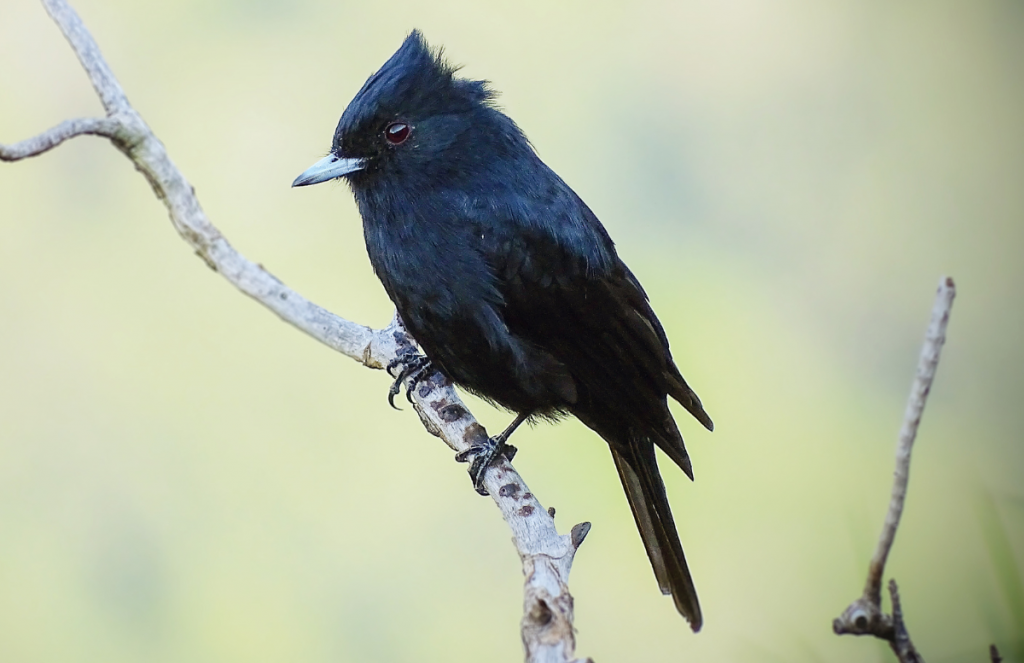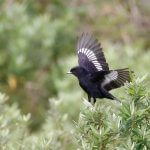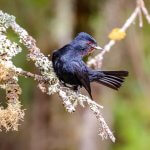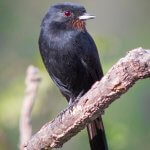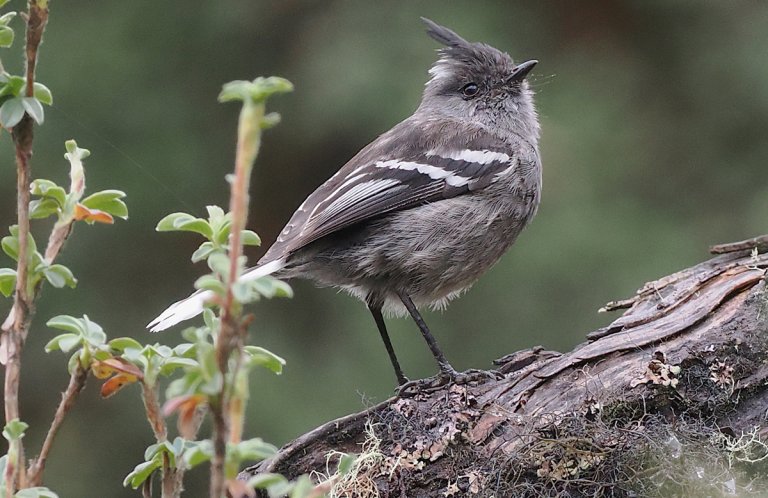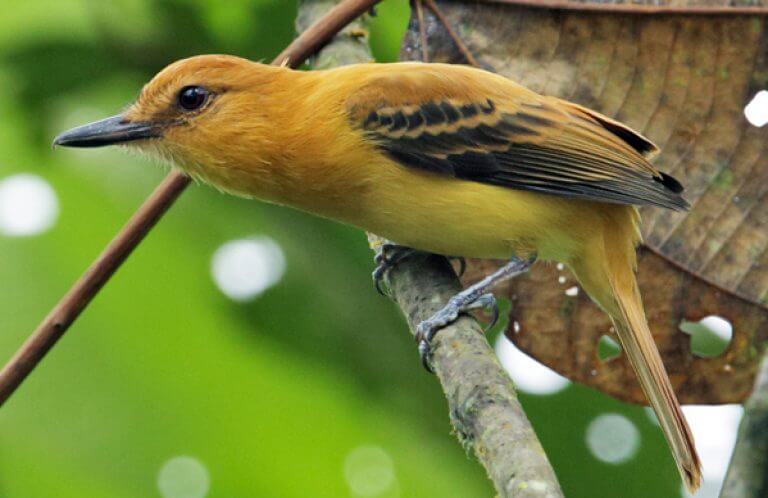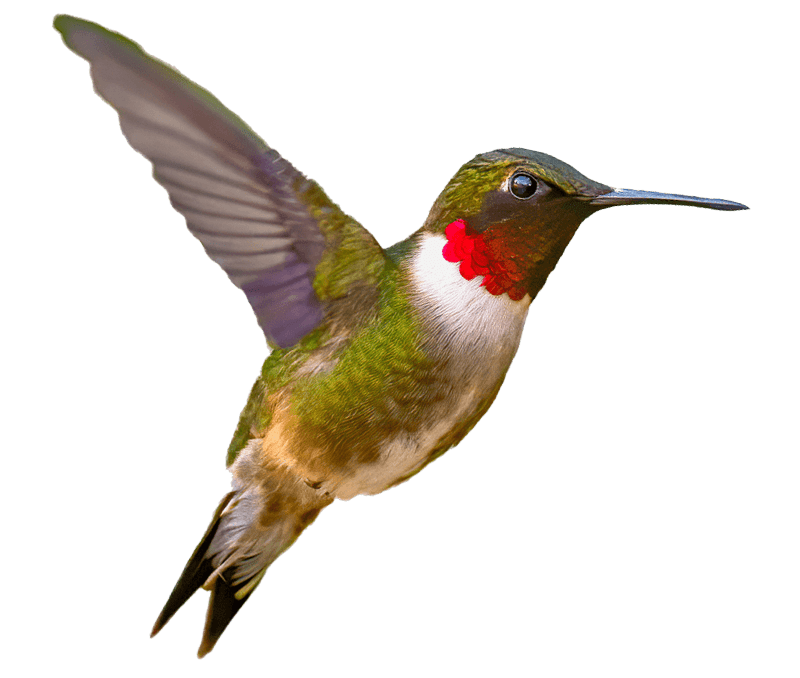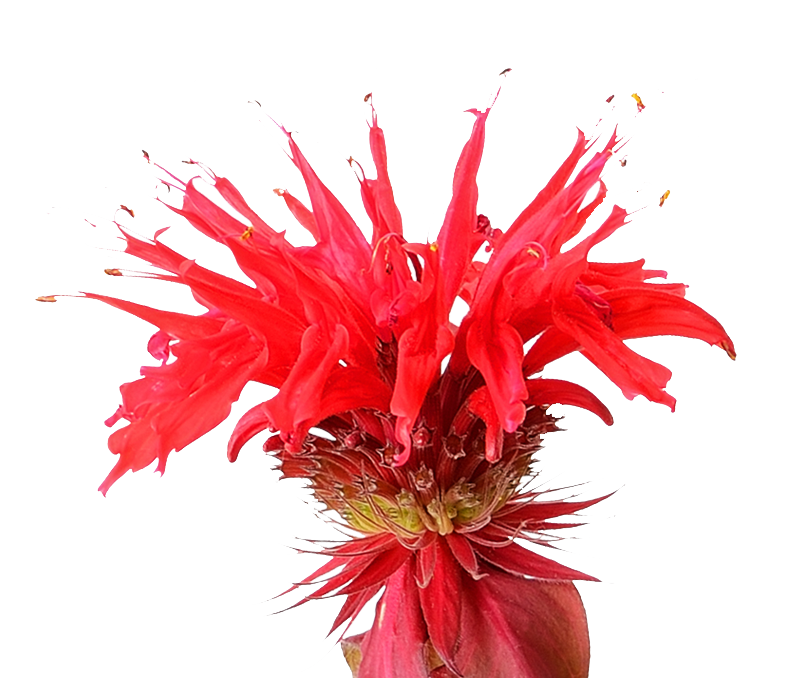About the Velvety Black-Tyrant
The sleek Velvety Black-tyrant, or maria-preta-de-garganta-vermelha in Portuguese, is found only in dry grasslands and forests of eastern Brazil, where its inky black plumage appears almost like a silhouette against the surrounding rocky, shrubby terrain. It shares these arid places with other rare endemics such as the Blue-eyed Ground-Dove and the White-browed Antpitta.
The male Velvety Black-Tyrant, true to its name, is entirely glossy blue-black with a small, bushy crest. The female is similar to the male, but lacks a crest and has reddish-brown streaking on the throat. Both sexes have white at the base of their primary wing feathers, which is hidden at rest but quite conspicuous in flight.
This flycatcher belongs to the enormous Tyrannidae (tyrant flycatcher) family, the largest bird family in the Americas. This feisty, fearless family of birds reaches its greatest number and diversity in South America, and includes species such as the Ash-breasted Tit-Tyrant, Cock-tailed Tyrant, Ochraceous Attila, and Antioquia Bristle-Tyrant.
Songs and Sounds
The male Velvety Black-Tyrant's song, most often heard during display flights, consists of short, high-pitched see notes. Its call is a dry trilling krrr, sometimes preceded by a high-pitched note: see krrrrr.
Song and calls:
Calls:
Breeding and Feeding
The Velvety Black-Tyrant's genus name, Knipolegus, is a combination of the Ancient Greek words knips (insect) and legō (to pick). This evocative name, literally meaning “insect picker,” is an apt description of this bird's insectivorous habits.
Like other tyrant flycatchers, the Velvety Black-Tyrant primarily preys on insects, spiders, and other arthropods. It forages by sallying out from a lookout perch to grab prey mid-air, then circles back to return to the same place to devour its catch. It also gleans insect prey from the leaves of trees and shrubs.
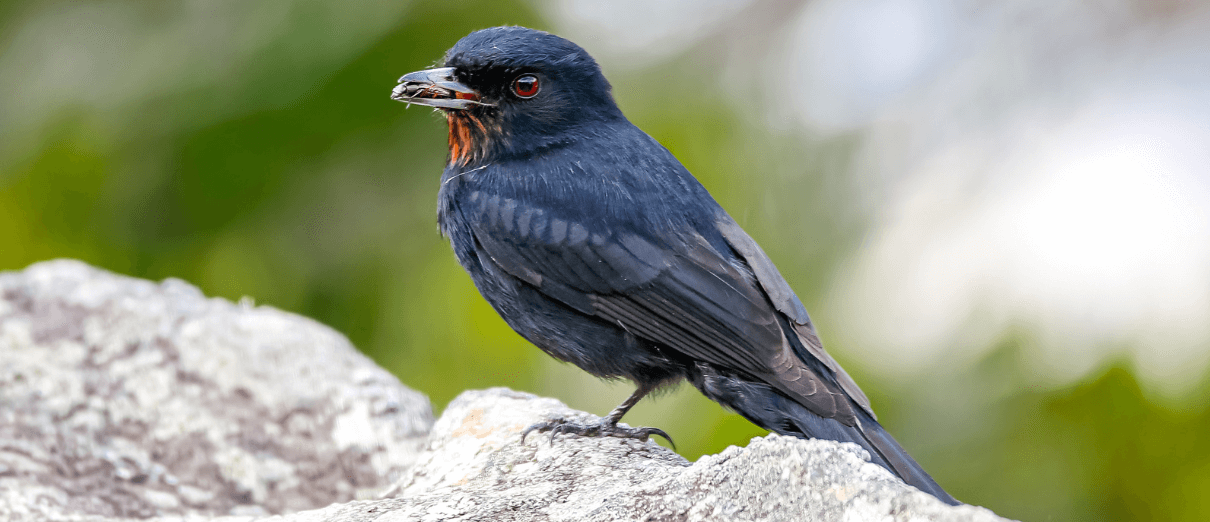
Although its courtship behaviors have not been described, the male Velvety Black-Tyrant likely employs display behaviors similar to those of other tyrant flycatchers, such as vocalizing with "dawn songs" and other specific calls to attract females, acrobatic aerial displays, and aggressive defense of its territory. Pairs are likely monogamous during the breeding season.
Scientists believe that the Velvety Black-Tyrant nests in crevices or burrows among rocks near streams. The nest itself is a cup made of roots and moss.
The female Velvety Black-Tyrant lays three brown-spotted white eggs, which she incubates alone while the male stands guard nearby. Both parents feed the chicks after hatching. Although specific data does not exist for this species, the young of closely related species usually fledge after 14 to 17 days in the nest. Parents continue to care for the young for several weeks after they fledge.
Region and Range
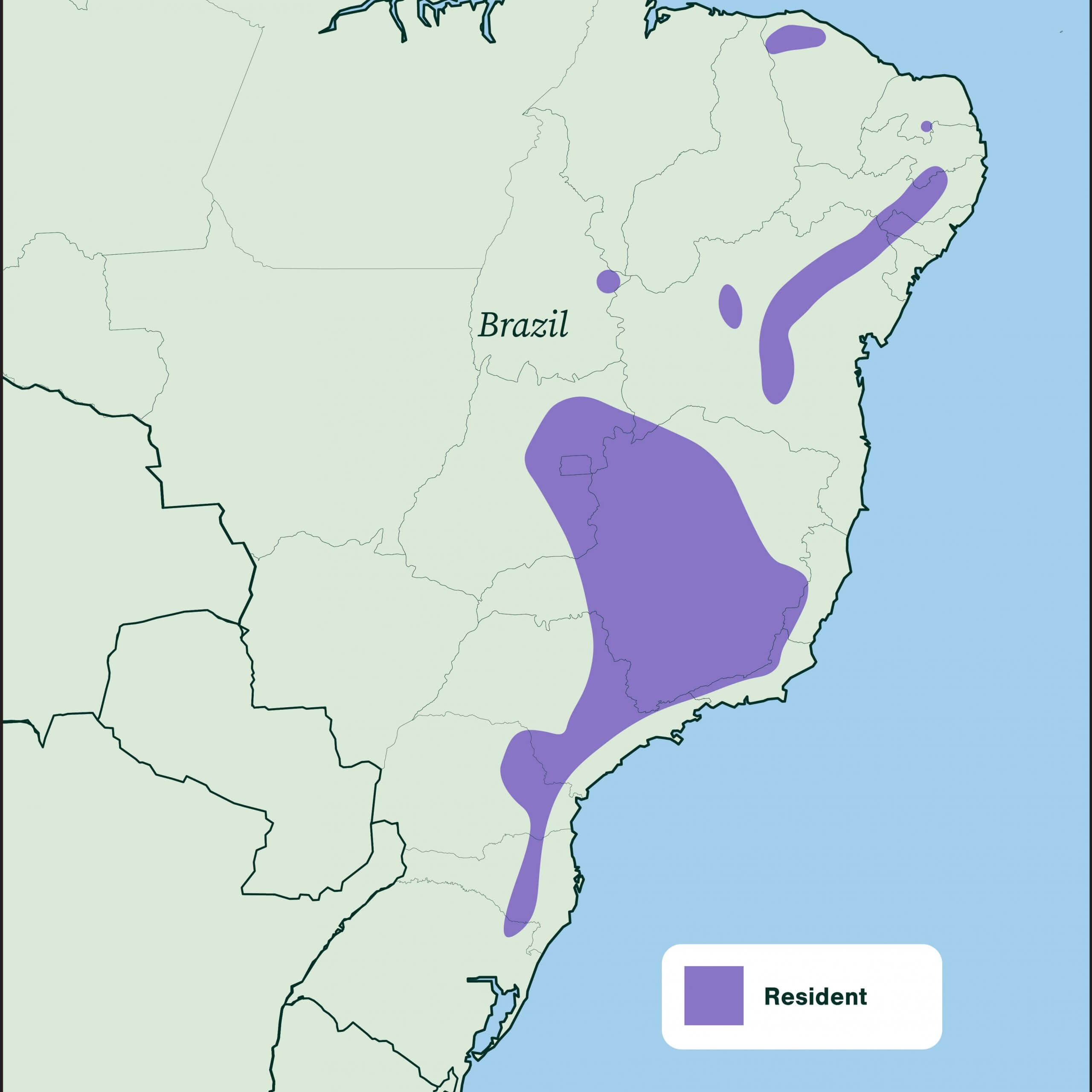
The Velvety Black-Tyrant is endemic to eastern Brazil, where it occurs in two separate populations in open grassy and rocky areas. One population can be found from the northeastern state of Pernambuco south to central Bahia, and the other is located further south, ranging from the state of Espírito Santo to Rio Grande do Sul.
Although most Velvety Black-Tyrants are resident, some make short altitudinal migrations during the austral winter months of June, July, and August.
Conservation
Habitat loss, along with the fragmentation and degradation of habitat, contributes to bird population declines of both range-restricted species such as the Velvety Black-Tyrant and long-distance migratory birds. Suitable habitat is the foundation of what birds need to thrive.
A changing climate presents a suite of often unpredictable threats to birds: extreme weather events, droughts, habitat loss due to rising sea levels, and intense heat are just a few ways climate change puts birds at risk.
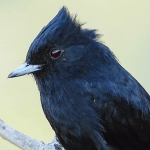
Help support ABC's conservation mission!
Pesticide use can take a heavy toll on birds, particularly insectivorous birds like the Velvety Black-Tyrant. Birds can be harmed by direct poisoning from pesticides or lose insect prey to pesticides sprayed on crops.
The Velvety Black-Tyrant is not well studied, and although its population size hasn't been assessed, scientists believe it is stable and benefits from having a very large range. Still, conservation action addressing threats to all birds can help ensure a future for endemic species like this one.
In Brazil, ABC works with partner Fundação Biodiversitas and local communities to protect important habitats used by the Velvety Black-Tyrant. These areas include the Canudos Biological Station, which shelters the Endangered Lear's Macaw.
ABC works to call attention to the pesticides and toxins most harmful to birds. We develop innovative programs, like working directly with U.S. farmers to use neonicotinoid coating-free seeds, advancing research into pesticides' toll on birds, and encouraging millions to pass on using harmful pesticides.
Get Involved
Many of the rarest bird species in the Western Hemisphere remain relatively unknown. You can learn more about these birds and the threats they face by signing up for ABC's Bird of the Week email series, which frequently highlights these fascinating birds.
American Bird Conservancy and our partners throughout Latin America and the Caribbean have created and expanded more than 100 bird reserves, which protect upward of 1.1 million acres of vital habitat. Together, we've planted more than 6.8 million trees, helping to restore degraded and damaged habitat. You can help us continue to protect endangered birds by making a gift today.




